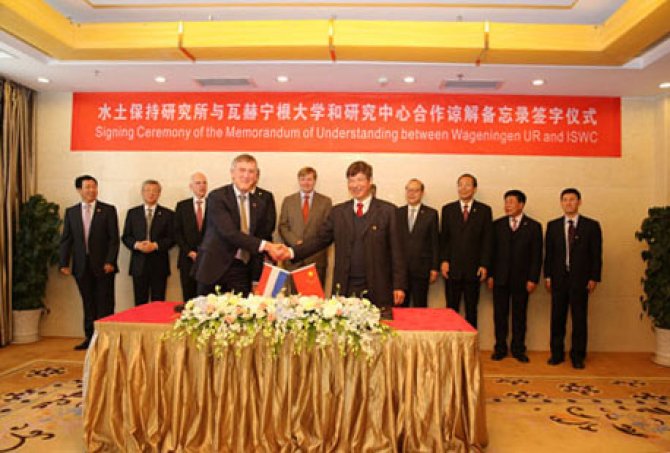
Noticias
King visits Loess plateau during state visit to China
During his state visit to China King Willem-Alexander visited the loess plateau. The king observed how the fight against centuries of erosion is going. This is happening through, among other things, the planting of trees, installation of terraces and changing the way farmers work. Several thousand square kilometers have already been taken under management and been changed from a nearly desert like landscape into a green and once again fertile area. Wageningen UR is part of this work. Present in the delegation were Arthur Mol, Rector magnificus, and Violette Geissen, from the chair group Soil Physics and Land Management. In the presence of the king a Memorandum of Understanding (MoU) with the Chinese partner ISWC was signed.
The delegation paid an extensive visit to an apple grower in the village of Yanhewanzhen. His harvest was an example of how, with less intensive/taxing production practices, income can be obtained and how land can be sustainably restored. Back in town, king Willem-Alexander attended the signing of an agreement of cooperation between Wageningen UR and the Chinese Institute for Soil and Water Conservation (ISWC).

The cooperation with ISWC started twenty years ago. Since the first project, time and again there have been new projects carried out. Thanks to measures by the Chinese authorities, the bare landscape has once again become a green landscape in the short time span of just 15 years. Both the erosion and the sediment load in the Yellow River have been greatly reduced. Still there are new challenges. There is now less river water available for users downstream, and the growing use of pesticides is of concern for both water and soil quality. These issues are included in the new MoU with ISWC.